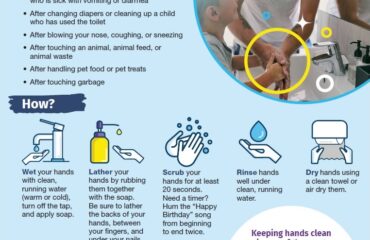Diabetes & Counting Carbs/Sugars and How it can help

Diabetic patients may have heard their doctor talk about their A1C test results. The patient may not understand what an A1C test is. And they may not know what lifestyle changes they can make to bring their A1C results into goal range.
What does an A1C tell me?
An A1C test helps tell you what your blood sugar levels have been like for the last 3 months. Blood sugar and blood glucose are often used to mean the same thing when talking about diabetes. An A1C test can help you and your doctor understand what your blood sugar levels are over a larger period of time. That larger period of time gives more information. That extra information allows the doctor to create a treatment plan that is better made for you.
How often do you need an A1C test?
When you are first found to have diabetes, your doctor will ask you to have an A1C test at least every 3 months until your A1C levels are within goal range. Once you and your doctor work together and reach the desired goal range you will be asked to have an A1C test at least every 6 months. For diabetic patients, the goal range for an A1C test is for it to be less than 6.5%, but this goal can be different based on other reasons your doctor may check for.
What does that goal of less than 6.5% mean?
That less than 6.5% goal is the amount of sugar present on your blood cells upon running the A1C test. The blood sample is looked at to see what number of blood cells are coated in glucose (sugar). If less than 6.5% of your blood cells are coated in sugar you have reached your A1C goal.
How do you reach an A1C goal of less than 6.5%?
One option is known as carb counting. Carb counting, carb is short for carbohydrate which is just the scientific category for sugar. Carbs are found in all types of food and drinks, even those you would not normally think to be sweet or have sugar in them like rice, bread, and potatoes. For example, when you eat potatoes, they don’t taste sweet, but when you eat them and they go into your stomach. From your stomach the pieces of potato get made smaller and smaller in your body until they are so small, they become sugar. That sugar can be found in your blood and be counted by the A1C test.
What is carb/sugar counting?
Carb counting sounds just as it is, counting carbs/sugars. You can look at food labels to see how many carbs/sugars there in your prepared foods. But for food like potatoes there’s no nutrition label. How do you find out how many carbs/sugars potatoes have? Well, you can look it up online. You can also ask your doctor for help. Find out how many carbs/sugars there are in the food you eat. Then you can keep a food diary of all the foods you ate that have carbs/sugars. At your next A1C test you and your doctor can look at your food diary. Your diary will help you see how the carbs/sugars you eat work with your A1C test. Changes to your diet or medicine can be made to help you reach your A1C goal.



